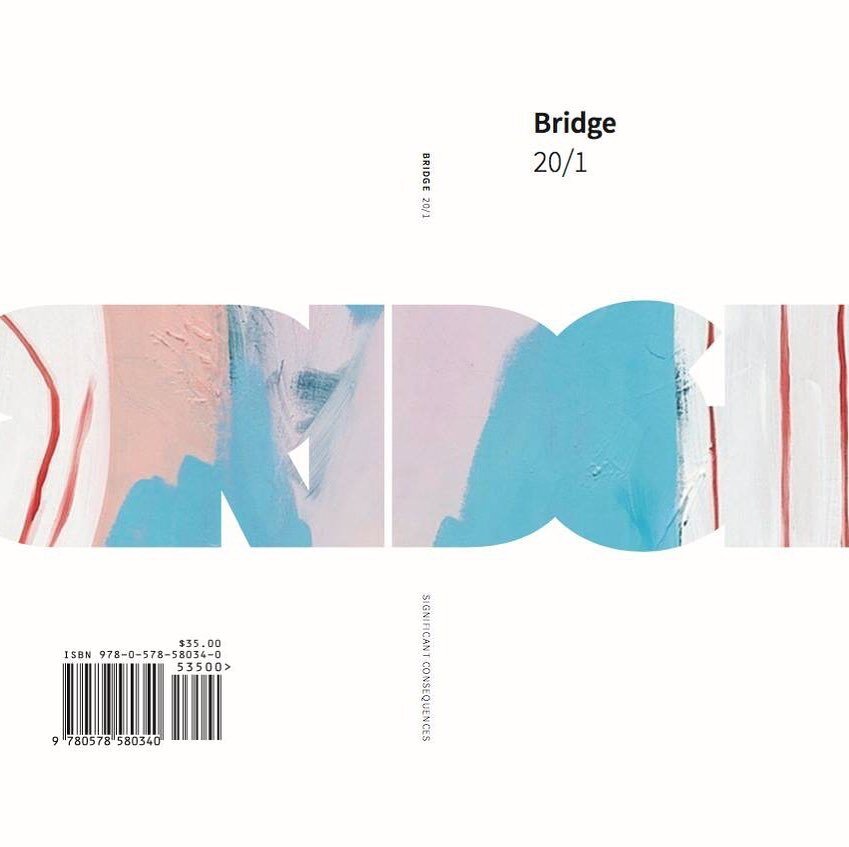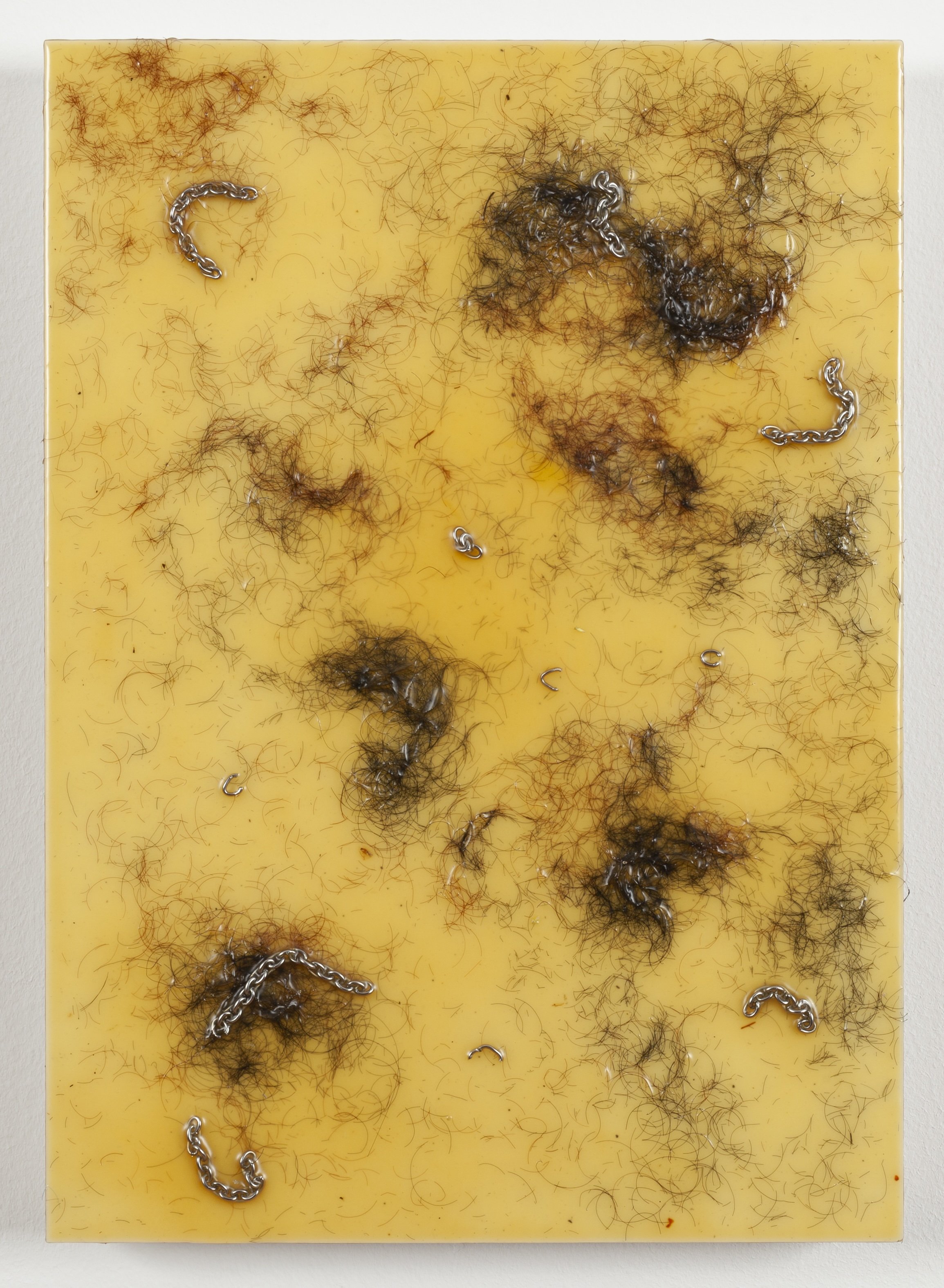REVIEW: Haegue Yang, “Flat Works” at The Arts Club of Chicago
Haegue Yang, Hairy Shatters, 2023. Chipboard, wood varnish, wig, chains, dust, insect, hair, 35 x 25 x 2 cm. Courtesy of the artist. Photo: Studio Haegue Yang.
REVIEW
Haegue Yang, Flat Works
The Arts Club of Chicago
201 E Ontario St
Chicago IL 60611
Sept. 18-Dec. 20, 2024
By Alexandria Knapik
Haegue Yang: Flat Works at The Arts Club of Chicago presents a remarkable retrospective of Yang’s two-dimensional works spanning three decades. While Yang is celebrated internationally for her sculptural and immersive installations, this exhibition offers a rare glimpse into her flat works, which are often overshadowed elements of her practice. These include series like Hardware Store Collages, Lacquer Paintings, Non-Foldings, and Mesmerizing Mesh, as well as works from her Trustworthies and Edibles series, all highlighting her nuanced exploration of the concept of “flatness.”
Haegue Yang, Edibles Diptych – Meidi-Ya, Genting Garden, Salads Royale, 176 g and 169 g, 2021. Vegetable pressed on paper, 2 parts, each 91.5 x 57.5 cm. Image courtesy of the Artist and STPI.
Upon entry visitors are first greeted by a custom-built trellis, a centerpiece that introduces Yang’s Mesmerizing Mesh series, a collection of intricate cut-paper collages inspired by global shamanistic traditions. These works exhibit finely crafted, kaleidoscopic patterns in delicate and intricate paper folds that invite closer inspection. As viewers move through the structure, they encounter an array of books that complement the artwork, detailing paper traditions from regions in Asia, including Chinese, Korean, Japanese, Russia, and Indian. These books are grounding Yang’s work in the broader tradition of international paper artistry. The books detailed on Slavic, Polish, Jewish, Filipino traditions, and the only feature from the America’s was on Mexican papel picado. A lot of the texts were in their original language, and their caption had a historical and academic context. However, one of the two Mexican books stuck out as primarily a how-to craft book with a minor bit of historical context, authored by a woman named Kathleen Trenchard, who does demos with the book on PBS. Nonetheless, those techniques are on display holistically.
Haegue Yang, Splashing Volcano Ash Gaze – Mesmerizing Mesh #140, 2022. Hanji on alu-dibond, framed, 62 x 62 cm. Courtesy of the artist. Photo: Studio Haegue Yang.
The East Gallery, with the trellis, showcases Yang’s disciplined approach to two-dimensional composition, featuring entrancing color gradients and concealed figures that invite a playful game of visual discovery. The works blend precision and delicacy, with each piece offering a unique experience in its harmonious color and thoughtful arrangement. Enhancing this sensory experience is Yang’s window installation is a dramatic wallpaper applique of an enlarged pattern from one of her works on the Mies van der Rohe stairs. This piece blurs the window view and infuses the ground floor galleries with a sense of layered depth, creating a striking juxtaposition between flatness and volume.
Moving to the West Gallery, the tone shifts as Yang’s Hardware Store Collages, Trustworthies, Edibles, and Non-Foldings series are showcased in an assortment of hanging methods, sizes, and materials, introducing a dynamic variety within the artist’s two-dimensional framework. The playful elements scattered throughout the works add a humorous and whimsical dimension, making the experience both thought-provoking and accessible.
Curated by Janine Mileaf, the exhibition beautifully captures the thematic coherence of Yang’s career while highlighting the diversity within her two-dimensional explorations. The Arts Club’s midcentury space further complements the viewing experience, providing a warm, elegant setting that aligns with Yang’s nuanced and meticulously layered work. However, some limitations of the space, as inherent as space itself, slightly detract from the experience, as a couple works: Certificate #1 and Triptych Moon – Coffee, Tea, and Cacao are somewhat obscured, blending less seamlessly with the rest of the curation.
Haegue Yang, Non-Folding – Geometric Tipping #15, 2013. Spray paint on paper, 142.6 x 102.6 cm. Courtesy of the artist.
To make a note on relatability, I found myself thinking about references and hyper-organization throughout the walkthrough. With the addition of historical and cultural texts, an interactive trellis, and Yang’s unique exploration of “flatness” as a conceptual theme, Flat Works offers both a tactile and visual treat for visitors. This exhibition is a testament to Yang’s ability to craft a cohesive narrative across seemingly disparate elements, uniting diverse cultural references, techniques, and personal motifs. The result is an experience that is both challenging and rewarding, grounding Yang’s “flat” projects within a rich, multidimensional framework that reflects her ongoing interest in themes of migration, displacement, and the confluence of different histories.
For those unfamiliar with Yang’s work, Flat Works offers a comprehensive introduction to her distinctive visual language, while long-time admirers will appreciate the depth and intentionality woven throughout each piece. The Arts Club’s thoughtful curation underscores Yang’s brilliance and positions her as a trailblazer within contemporary art, making this exhibition a must-see for anyone interested in the intersections of craft, culture, and conceptual inquiry.
Alexandria Knapik is a writer living in Chicago.
Like what you’re reading? Consider donating a few dollars to our writer’s fund and help us keep publishing every Monday.




